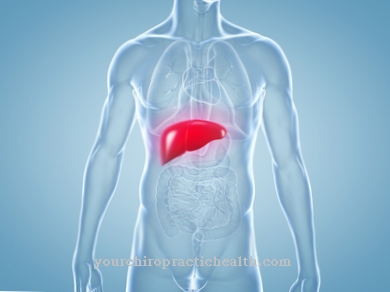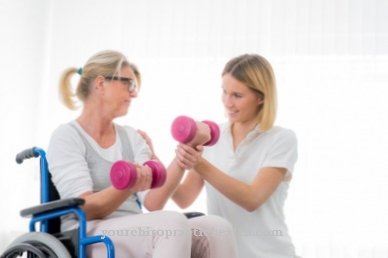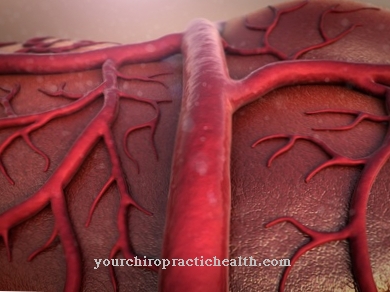As Heart rhythm refers to the complete repetitive sequence of heartbeats, including electrical excitation and heart muscle contractions. In people with a healthy cardiovascular system, the atria first contract and pump the blood into the chambers, which then contract, forcing their blood into the large body and pulmonary circulation. Normally, the complete heartbeat sequences move in a frequency band of 60 to 80 Hz without physical stress.
What is the heart rhythm?

The heart has four cavities, two antechambers (atrium) and two chambers (ventricles). In order to fulfill its task of constantly supplying the body tissue with oxygen-rich blood, the antechambers and the chambers contract and relax alternately in a certain sequence, in a certain rhythm.
The “correct” sequence of a complete impact cycle is regulated electrically. The heart has, so to speak, its own pacemaker, the so-called sinus node, which is located in the right atrium near the confluence of the superior vena cava. The sinus node represents the primary excitation center and sets the pace.
Due to the electrical impulse that it sends out, the atria contract while the chambers relax (diastole) and take over the blood from the atria in their cavities when the leaflet valves are open. The electrical impulse from the sinus node is then picked up by the atrioventricular node (AV node), the secondary cardiac pacemaker, which forwards it to the two chambers in a complex conduction system. The two chambers then contract (systole) and press their blood into the great body circulation or into the pulmonary circulation.
Function & task
The main task and function of the heart rhythm is to adapt the sequence of the beats between the antechamber and the chambers to the respective need for different body loads. This ensures a sustainable, optimal oxygen supply to the body tissue. At the same time, the heart rhythm adapts to the capabilities of the heart muscles (myocardium) in order to keep it healthy and to avoid damage caused by long-term excessive demands.
The sinus node in the right atrium near the confluence of the superior vena cava is primarily responsible for maintaining and adapting the optimal beat sequence and beat frequency. It is composed of a network of nerves and generates the initial electrical stimulus, which is distributed to the smooth muscle cells of the atria and causes them to contract.
The contraction stimulus and thus also the contraction itself run from top to bottom, so that the blood is pumped through the open leaflet valves into the chambers. The AV node then bundles the electrical impulse and is responsible for transmitting and distributing the electrical shock impulse to the ventricular muscles through the septa. Here the contraction stimulus and thus also the contraction run from bottom to top, because the exits of the chambers are always at the top, near the septa to the atria.
The contraction sequences in the atria and the ventricles are somewhat comparable to the swallowing reflex, which ensures a specific contraction sequence of the esophagus so that the food is transported from the throat to the stomach in an orderly manner.
The resulting beat sequence, the heart rhythm, is largely autonomous, but must also be subject to a control option by the autonomic nervous system in order to be able to adapt the beat frequency, the force of the stroke and the blood pressure to the current requirement.
The sympathetic nervous system can therefore influence the sinus nodes, atria, AV nodes and the ventricles and drive the heart to peak performance via the messenger substances noradrenaline and adrenaline, which have a stimulating effect.
The antagonist is the vagus nerve, which as part of the parasympathetic nervous system influences the sinus nodes, atria and the AV node, but not the ventricles. The vagus nerve can release the messenger substance acetylcholine, which has a calming effect on the heart rhythm and blood pressure. In extreme cases, it can even lead to circulatory collapse.
Illnesses & ailments
The complex interaction of the heart's own excitation centers with the physical conditions of the heart and the influence of the autonomic nervous system can be disturbed and lead to typical symptoms and complaints.
In addition to a relatively rare, unusually high heart rate (tachycardia), which does not arise due to increased physical demands, and an unusually low heart rate (bradycardia), arrhythmia, a cardiac arrhythmia, can occur in particular.
It involves a disturbance in the sequence of the normal heart rhythm and is caused by a dysfunction of the electrical stimulation or conduction in the heart. By far the most common form of an arrhythmia is so-called atrial fibrillation, which is associated with disordered and rapid contractions of the atria with a frequency usually above 140 Hz. In contrast to ventricular fibrillation, atrial fibrillation is not directly life-threatening, but it can also be associated with noticeable and unpleasant loss of performance.
If the sinus node fails as the primary pacemaker, the AV node takes over as a secondary pacemaker and clock. However, the heart rate of 40-60 beats per minute is below the frequency of the sinus node. This ensures that the sinus node normally "overrides" the AV node as a clock and that there are no two independent contraction stimuli next to each other.
If the AV node also fails as a clock generator, the myocardial cells of the ventricles can depolarize (excite) themselves at a low frequency of 20-40 Hz, so that an otherwise imminent danger of death is initially overcome.
An arrhythmia, which is caused by so-called ventricular fibrillation with a frequency of more than 300 Hz, causes a reduction in the volume of blood that tends to zero, so that an immediately life-threatening situation arises.

.jpg)



.jpg)



















.jpg)

.jpg)
